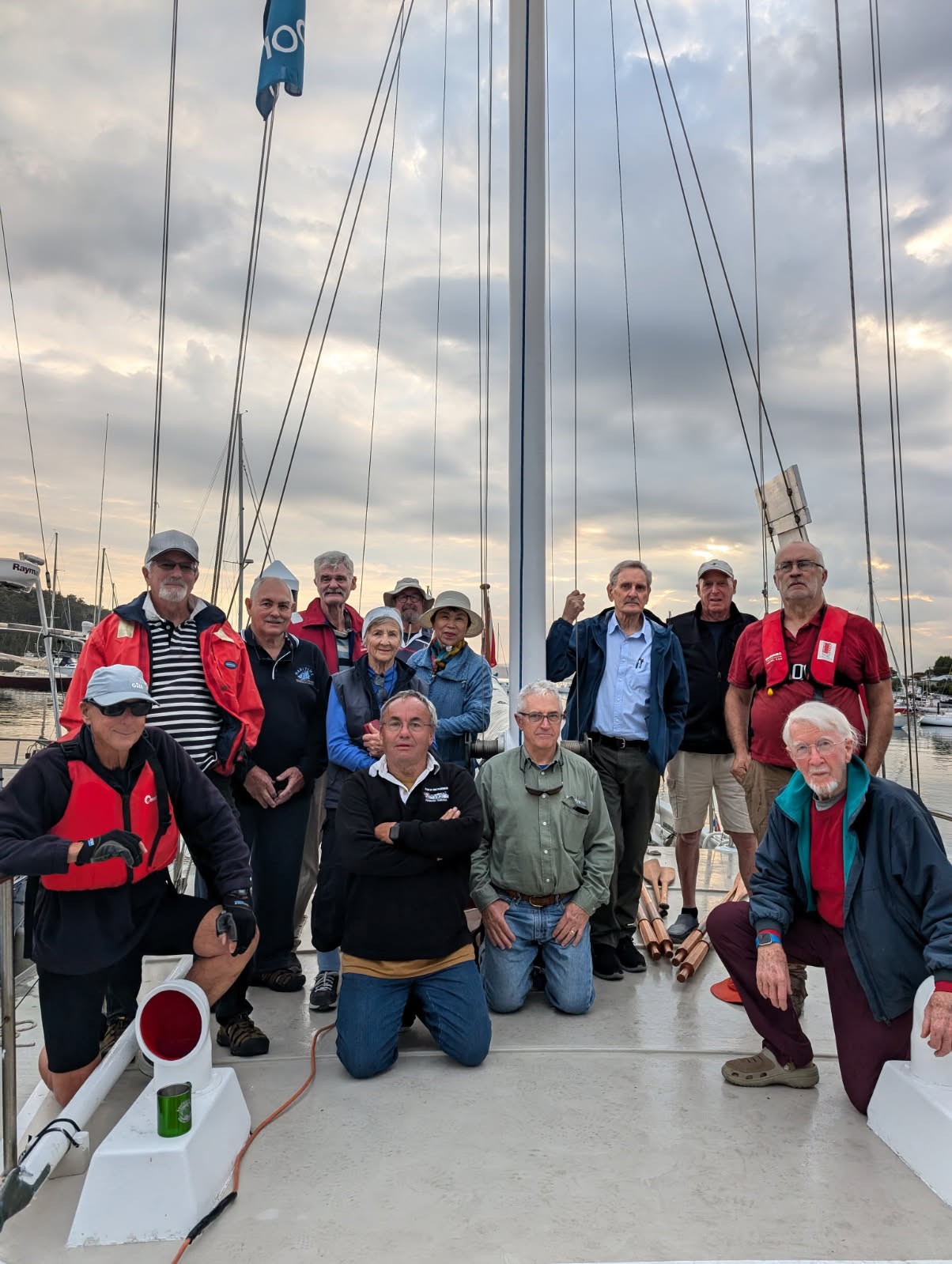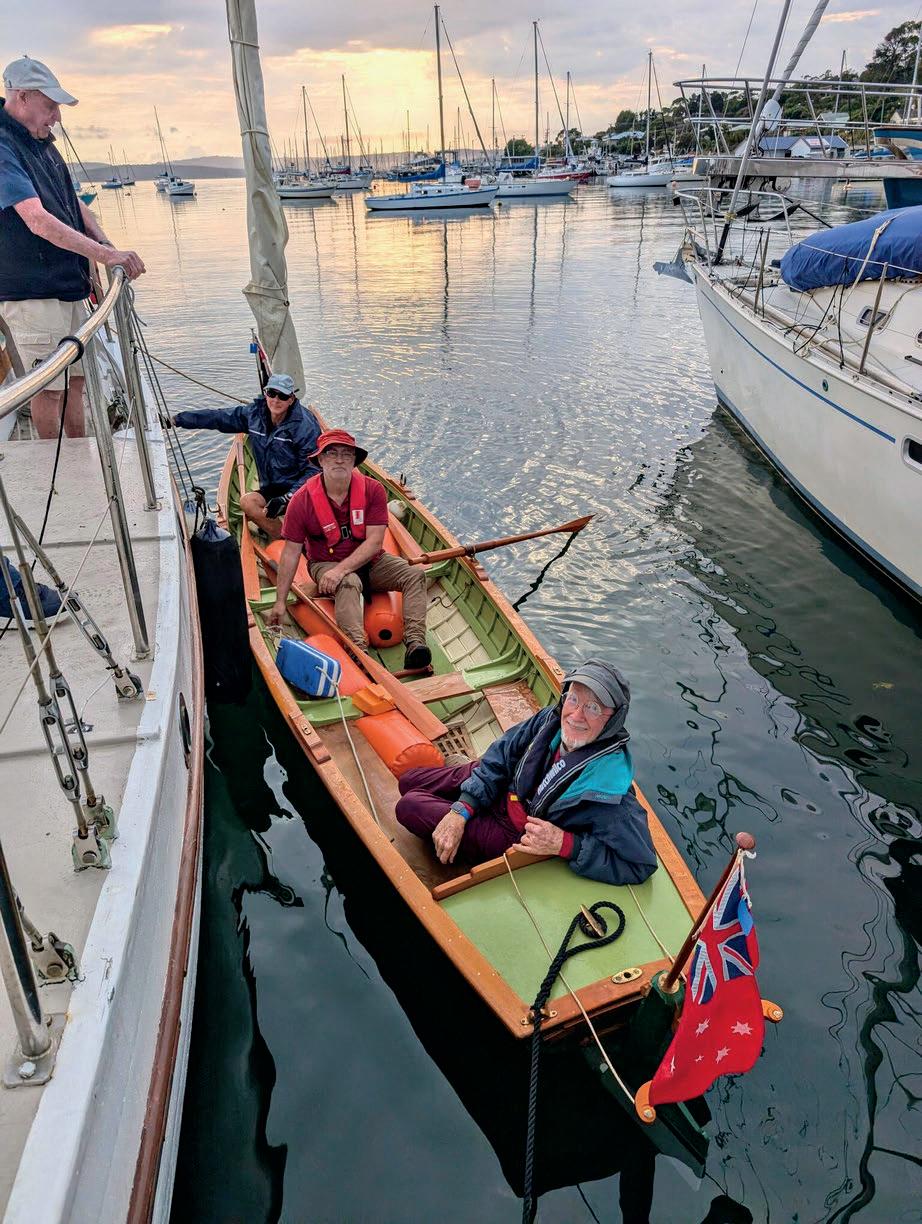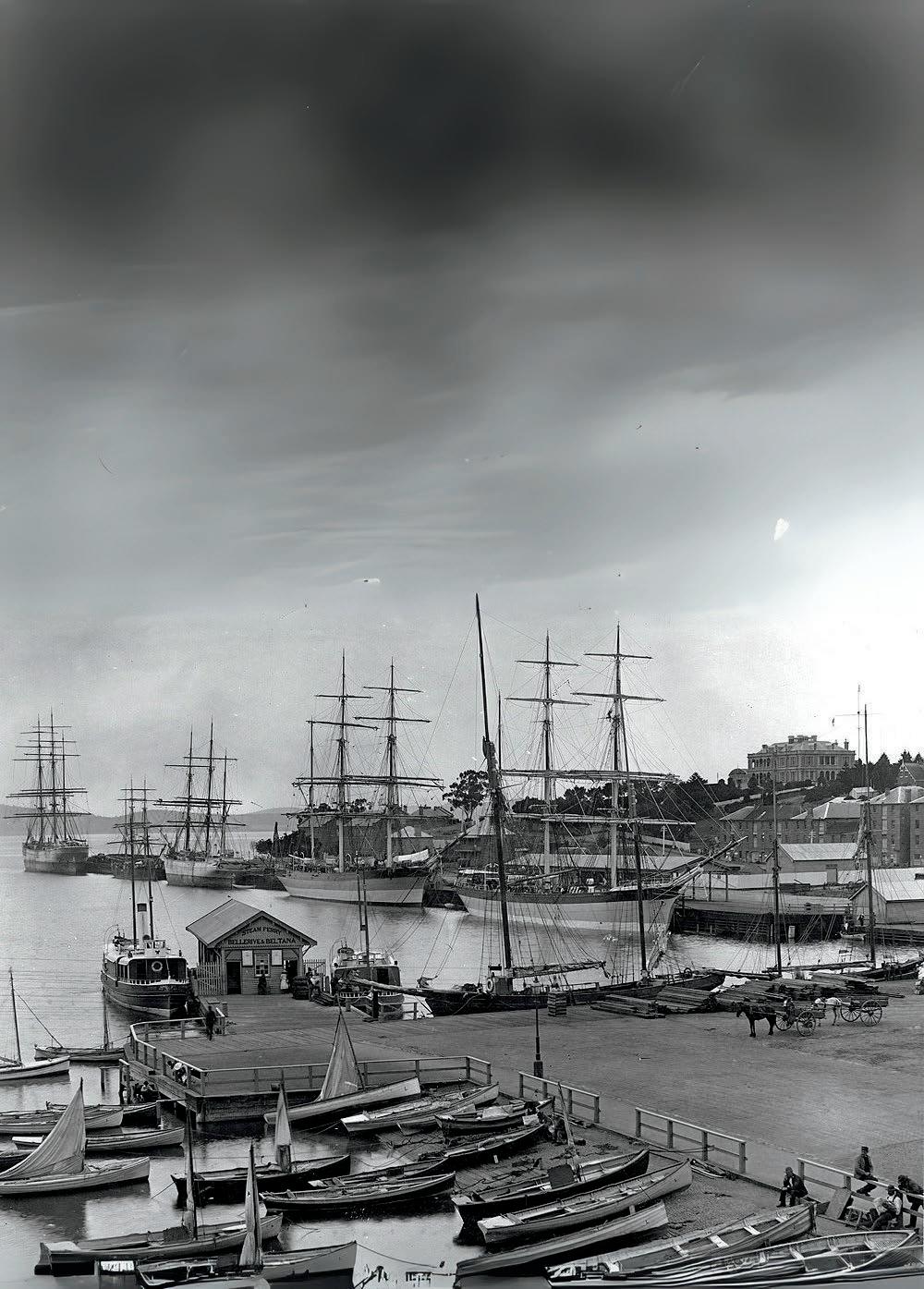
4 minute read
from the president’s log
Welcome to the Autumn edition of Maritime Times, highlighting how the Museum’s collections and the efforts of our volunteers and staff help make them accessible to the community
The fiftieth anniversary of the Lake Illawarra tragedy was marked by a memorial service organised by the Motor Yacht Club of Tasmania on 5 January The Museum collaborated with the Club to present an exhibition on the Lake Illawarra and the tragic collapse of part of the Tasman Bridge as part of this event Among those attending the memorial service was Mick Carr, a member of the Lake Illawarra’s crew. Having spoken of his experiences that night, Mick presented the Museum with a memorial plaque that had been given to him as a survivor some years ago
The following month, the Museum was heavily involved in the biennial Australian Wooden Boat Festival As well as exhibiting several small craft, the Museum was actively engaged on the water, with both Westward and Ramping Lion taking part in the festival’s sail past Ramping Lion is a Huon pine pulling boat built by leading Tasmanian boat builder Max Creese in 1981 Originally part of the Australian National Maritime Museum’s collection, Ramping Lion was transferred to the Museum relatively recently. Thanks to the efforts of our volunteers, Ramping Lion accompanied Westward from Kettering to Sullivans Cove in time for the festival’s opening ‘Parade of Sail’
The Lake Illawarra memorial and the newly revitalised Ramping Lion reflect two very different ways in which the Museum’s collections sustain meaning and memory within the community
The Museum’s collections have largely been built through the generosity of the community, and this edition of Maritime Times highlights several recent donations Some of these are already on display, while others will be incorporated into refreshed exhibitions in the near future In accepting these donations, the Museum also takes on the responsibility of managing them for future generations
One example of the challenges of collection management is the ongoing project to rehouse the Museum’s photographic collection using conservation-standard storage materials Comprising many thousands of images, this collection is a key record of Tasmania’s maritime heritage and is regularly used by researchers both within Australia and internationally
Like so many of the Museum’s core activities such as welcoming visitors special projects like the photographic rehousing initiative are only possible thanks to the dedication of our volunteers Volunteers are essential to the Museum’s operations and future potential, so I encourage you to help promote our volunteer program and the many rewarding opportunities it offers
Beyond the Museum’s own activities, this edition of Maritime Times continues to document Tasmania’s maritime heritage, past and present Highlights include a review of protest ships that have visited Tasmania, an overview of the Antarctic Division’s ice core project, and a look at TasPorts’ Making Waves Foundation Long-time Museum member Rex Cox also shares his recollections of making model boat kits during the 1950s and 1960s an aspect of maritime history surprisingly underrepresented in our collections
The past summer has been an active one for the Museum and its volunteers, and autumn looks set to be just as busy At the Museum in Argyle Street, we anticipate the installation of a new series of interpretative signs for the large objects in the Museum’s front garden Additional signage will highlight the Museum’s location on the original shoreline of Sullivans Cove and explain how the architectural design of the Museum building influenced that of the nearby TasNetworks substation
Further afield, final installation work is underway on the interpretation of Semaphore Cottage in Princes Park Originally built for the Mulgrave Battery, the cottage later became the centre of Australia’s largest optical telegraph, or semaphore signal, system This interpretation drawing on the Museum’s collections has been enhanced by loans from the Port Arthur Historic Site Management Authority and Narryna
There will be more about these projects and others over the coming months










